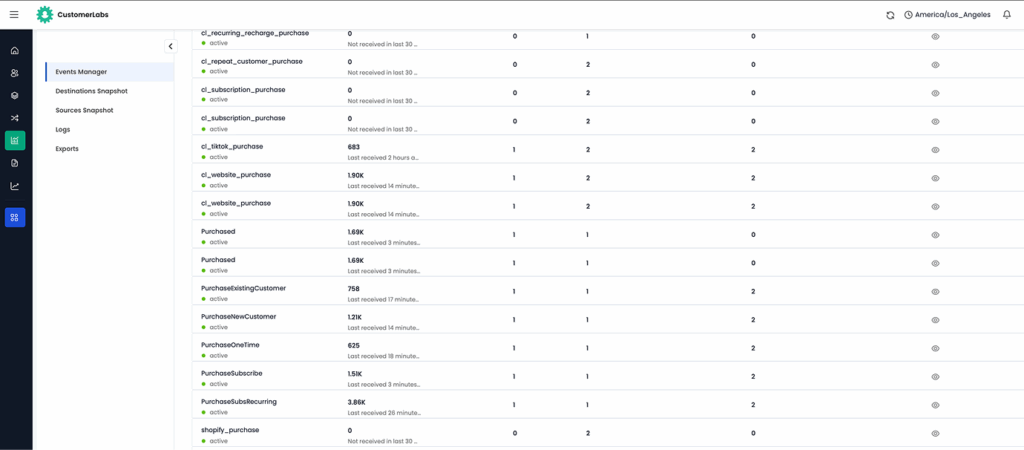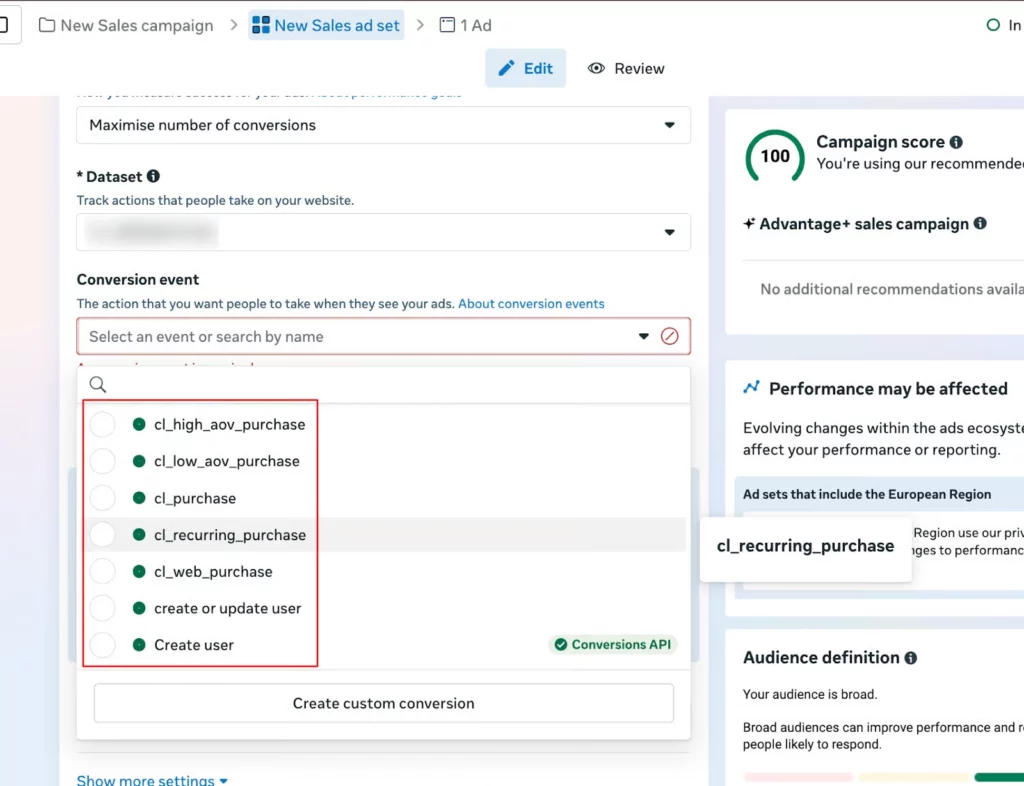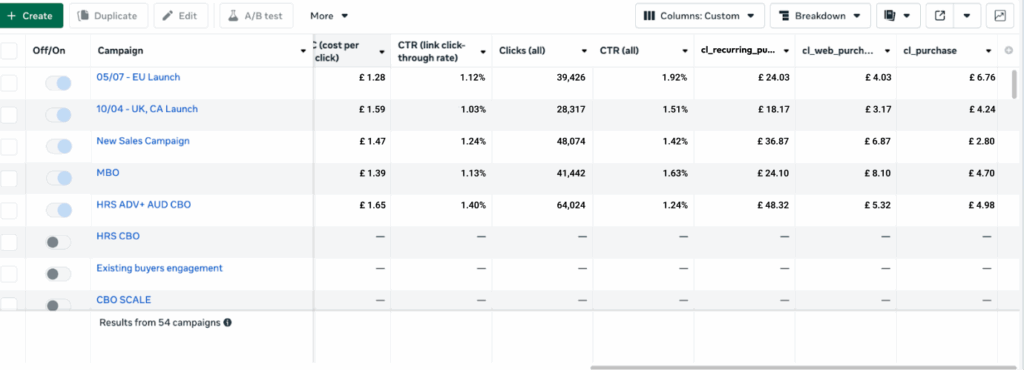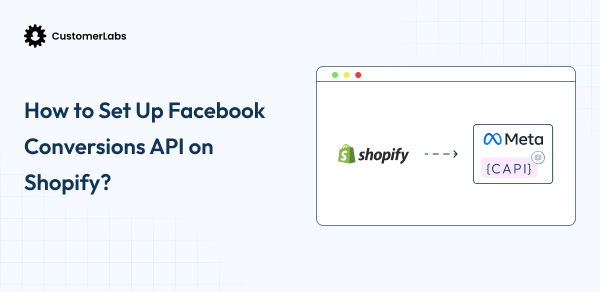In the subscription-commerce world, the hype is often around “how many new subscribers you got this month”. Feels good, right?
But here’s the inconvenient truth: that’s not the real growth lever.
What really drives sustainable profitability is how many of those subscribers makes repeated purchases. And behind that lies two deeper, inter‐locking ideas: lifetime value (LTV) and sequential learning through signal engineering.
To truly scale, you need to increase Lifetime Value (LTV) and train your ad platforms like Meta to find more customers who renew. Let’s break down how you can do that.
Why is LTV The North Star Metric for Subscription Brands?
What is LTV? Lifetime Value of a customer.
How do you calculate it? Using this simple formula down below:
LTV = Average Order Value × Purchase Frequency × Retention Time
Think of two customers:
Customer A subscribes once, then cancels.
Customer B subscribes, renews 6 times, pauses for a month, then renews 12 more times.
They might cost the same to acquire; but their value to your business is dramatically different. That difference is encapsulated in LTV (Lifetime Value).
LTV is the financial and strategic measure of whether your subscription business model really works.
Higher LTV means:
- You can spend more on acquisition (CAC), knowing each customer brings more back.
- You build loyalty, stability, and compounding revenue.
- You create a moat around your business: you’re not just chasing new names, you’re building recurring relationships.
But increasing LTV does not happen just like that in a day. It requires repeat purchases. Each repeat purchase, each repeat engagement, extends that LTV horizon. If you don’t drive recurring purchases, you’re simply doing one‐time transactions with extra billing complexity.
So, to grow LTV, you must grow repeat purchases.

Recurring Purchases: The Learning Engine Behind Subscription Success
Now we know what we need (repeat purchases). But how do we systematically increase them? This is where you need to focus.
You need to train your Meta campaigns to bring more repeat buyers. How?
Listen to what Mark Zuckerberg said in an interview with Stratechery’s Ben Thompson.
He said:
“You’re a business, you come to us, you tell us what your objective is … you don’t need any creative, you don’t need any targeting demographic … I think that’s going to be huge.”
That one statement sums up where Meta advertising is headed. Meta’s AI algorithms (Meta Andromeda) are evolving from ad-targeting platforms into objective-driven learning machines.
If you clearly define your objective, in this case your objective would be to increase recurring purchases or maximize subscription renewals.
And Meta’s algorithms will optimize everything around it: audience discovery, delivery, creative adaptation, even bidding.
But, Businesses Only Optimize Default Purchase Events
Let’s take the standard purchase event that you send to Meta for targeting.
One event might be a first-time order, another might be a renewal from a loyal subscriber who’s been with you for six months, and another could be a customer reactivating after a pause.
To Meta every one of those events looks identical, a single transaction that signals success. But the context behind those purchases is very different.
If Meta can’t distinguish between a one-time buyer and a high-LTV recurring customer, it can’t learn what kind of buyer you truly want.
That’s where most subscription brands plateau. They keep optimizing for volume of purchases, not quality of purchases.
Tell Meta What You Really Want
What if you could engineer your data in a way that told Meta, “Hey, This is a repeat purchase. This customer came back for the fifth time.”
Because now Meta’s AI starts recognizing patterns in sequences, not just snapshots. It begins to understand the journey of a customer: first purchase → second → third → renewal → retention; instead of treating them as isolated conversions.
This process is called Sequential Learning, that’s how you train Meta to see time-based patterns in user behavior.
But sequential learning only works if the data you feed it is precise and structured.
That’s where Signal Engineering comes in the process of structuring, labeling, and prioritizing the right signals so Meta learns what truly drives your LTV.
By distinguishing between first purchases, renewals, churn, and reactivations and feeding each as a unique event; you’re no longer just tracking conversions.
You’re teaching Meta your business model.
This is how subscription brands move from advertising products to training algorithms.
Because in the age of AI-driven marketing, the brands that grow fastest are teaching better.
But if you are Shopify Recharge, you have a challenge.

What is the Hidden Challenge with Shopify + Recharge?
You may already be using Recharge on Shopify to power your subscriptions; great. But there’s a critical blind spot:
When you run subscriptions using Recharge on Shopify, the first purchase usually happens through Shopify’s checkout; so a standard purchase event fires, and Meta sees it.
But every subsequent recurring happens inside Recharge, not Shopify.
That means:
- There’s no Shopify checkout process triggered during a renewal.
- No purchase event is fired.
- And Meta never receives that repeat purchase signal.
When Meta doesn’t see the sequence: initial purchase → renewal → repeat → long-term retention; it can’t identify what a high-LTV subscriber looks like.
Your ads keep finding more first-time buyers instead of people who’ll renew three, five, or ten times.
To fix this, you can’t rely on Shopify or Recharge alone. You need a system that can capture every renewal directly from Recharge, label it as a recurring event, and send it server-side to Meta via the Conversions API.
This is where 1PD Ops comes in, creating a structured data layer that bridges this communication gap between your subscription backend and Meta’s learning systems.
Without it, you’re essentially trying to train an AI for half the story.

How 1PD Ops Works Together With Shopify and Recharge?
Let’s connect the dots.
Shopify handles the storefront and first purchase. Recharge manages renewals and recurring billing. But neither can natively tell Meta when a repeat purchase happens.
That’s where First-Party Data Operations (1PD Ops) steps in; acting as the bridge between your subscription system and Meta’s learning engine.
Here’s how it works
Capture Renewal Events in Real Time
1PD Ops fixes that gap by capturing data from both platforms:
- From Shopify, it collects all standard events — page_view, add_to_cart, checkout_started, and the initial purchase.
- From Recharge, it listens to every subscription webhook — subscription_created, subscription_renewed, subscription_skipped, subscription_cancelled, and subscription_reactivated.

1PD Ops receives these events directly through the Shopify and Recharge APIsensuring nothing slips away. So even if renewals happen entirely inside Recharge (outside Shopify’s checkout flow), the data is still captured, unified, and ready to be sent to Meta as structured signals.
Enrich and Label the Events
Once 1PD Ops ingests these raw events, it doesn’t just store them; it unifies every touchpoint from Shopify and Recharge into a single customer profile.
That means all actions: first purchase, renewals, skips, pauses, and reactivations; are stitched together under one identity. No more fragmented data across multiple tools.
You get a 360° customer view that represents the entire subscription journey.
With this unified profile in place, 1PD Ops then enriches the data with:
- Customer identifiers (email, phone, customer ID)
- Event timestamps and order value
- Subscription status and cycle count
- Purchase frequency and LTV indicators
Send Events to Ad Platforms
Once all events from Shopify and Recharge are unified under a single customer profile, 1PD Ops sends these enriched signals to your ad platforms, not just limited to Meta.
You can send the data to multiple destinations such as Google, TikTok, LinkedIn and others.
Because these signals come from your first-party data, they’re privacy-compliant, reliable, and directly linked to each customer identity. This means no reliance on browser cookies or front-end pixels; every event is verified, deduplicated, and tied to real purchase behaviour.
Once Meta starts seeing this sequence of events, its Andromeda learning model begins to connect the dots. This is Sequential Learning in action, fuelled by Signal Engineering; you’re teaching Meta what retention looks like.
Optimise, Measure, Repeat
With repeat purchase signals flowing in, you can now:
- Create custom conversions for repeat or multi-cycle events.
- Build lookalikes based on high-LTV subscribers.
- Attribute ROAS and campaign performance based on lifetime value, not one-time sales.
Your marketing loop becomes fully intelligent; continuously learning from every renewal, cancellation, or reactivation.
Also get your hands on the step by step guide to integration Shopify + Recharge without using GTM
We implemented the same setup for a brand and the results.
How This Brand Scaled LTV and Profitability on Meta?
A fast-growing brand (shall remain nameless due to NDA) running on Shopify + Recharge realized that while subscriptions were driving stable revenue. But Meta Ads was not optimizing for recurring buyers because it couldn’t see renewals happening inside Recharge.
Every sale looked the same: one-time or repeat purchases, all bundled under a single purchase event.
By implementing CustomerLabs 1PD Ops, the brand started capturing all purchase events: first-time, recurring, upsells; from both Shopify and Recharge. These enriched events were sent to Meta allowing the brand to use a new event, cl_recurring_purchase, as the campaign objective.

Meta’s AI began learning which users renewed repeatedly and optimized delivery toward high-LTV buyers.
Within 45 days, the results spoke for themselves; ROAS jumped by 32%, CPA for repeat buyers dropped by 27%, and renewal rate increased by 18%.

By feeding Meta the right signals, the brand finally aligned ad spend with real business goals: retention and lifetime value, not one-time transactions.
To conclude
Scaling a subscription brand isn’t about getting more subscribers; it’s about getting subscribers who repeat purchases.
With CustomerLabs 1PD Ops, you can capture every recurring purchase, unify it under one customer profile, and train Meta to find more high-LTV buyers.
That’s how you move from one-time sales to predictable, compounding revenue.
If you want to set this up for your recurring business, Book a demo or start your 14-day free trial to experience how CustomerLabs helps you capture recurring purchase signals, unify customer profiles, and train Meta to find high-LTV subscribers.




